#jan erasmus quellinus
Explore tagged Tumblr posts
Text
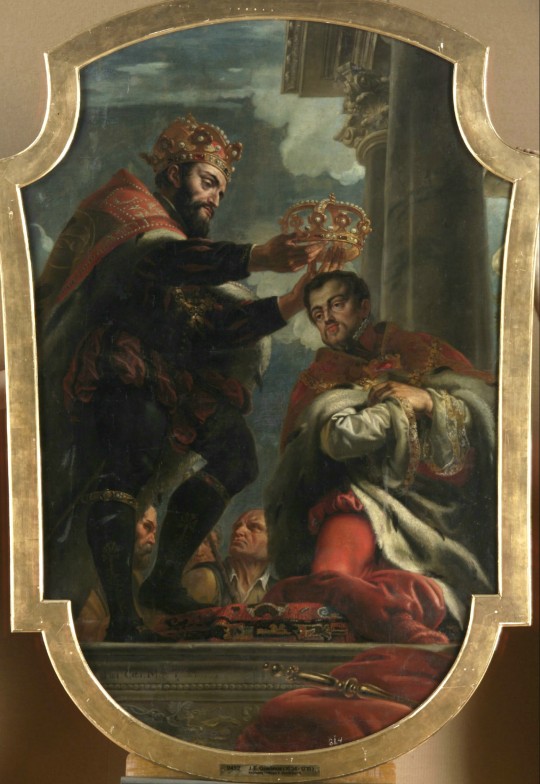
Charles V crowns Philip II. By Jan Erasmus Quellinus.
#monarquía española#reino de España#reyes de españa#casa de austria#carlos v#felipe ii#rey de españa#viva el rey#kingdom of spain#house of habsburg#jan erasmus quellinus
8 notes
·
View notes
Text

QUELLINUS, Jan-Erasmus Thetis Dips Achilles in a Vase with Water from the Styx 1668 Oil on canvas, Private collection
27 notes
·
View notes
Text
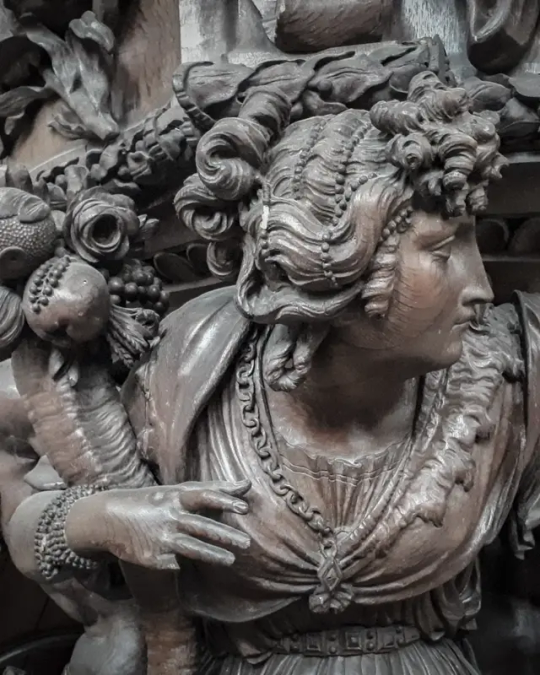
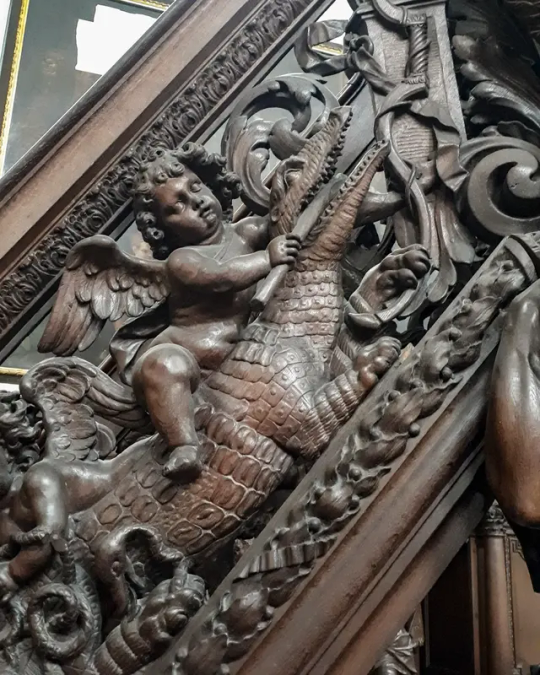

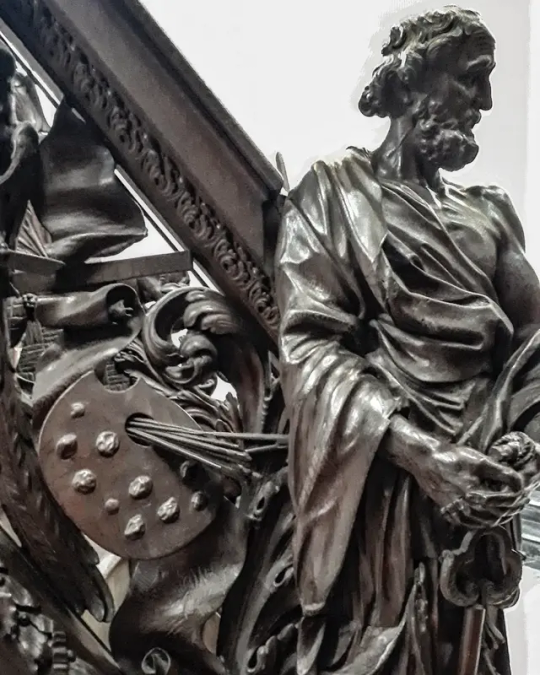
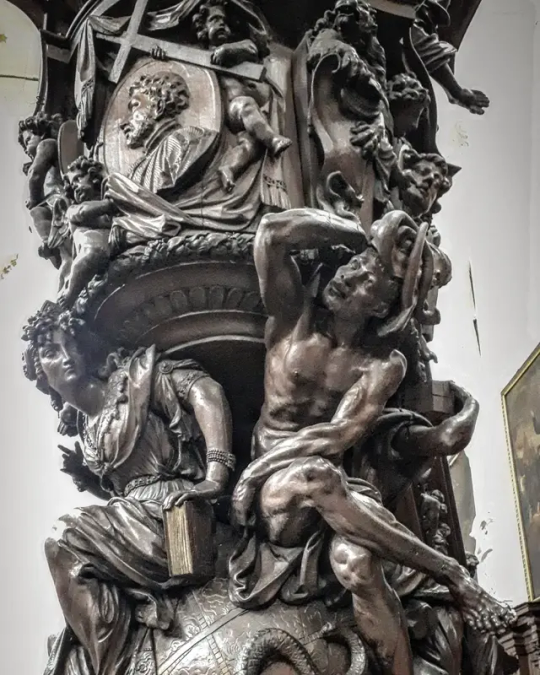
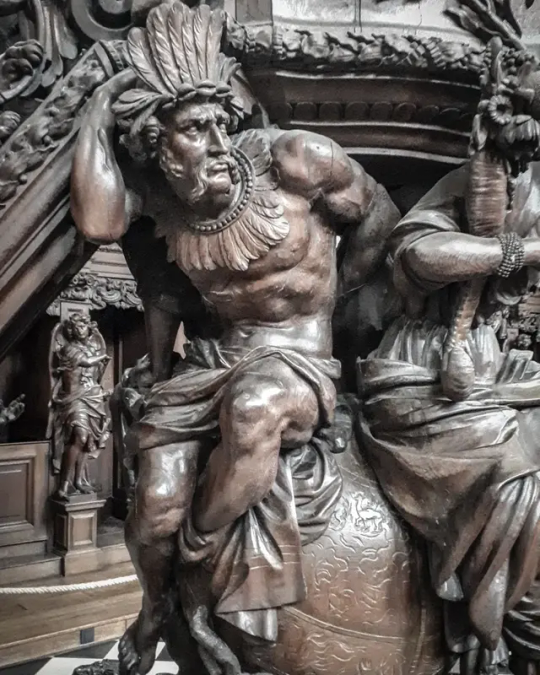


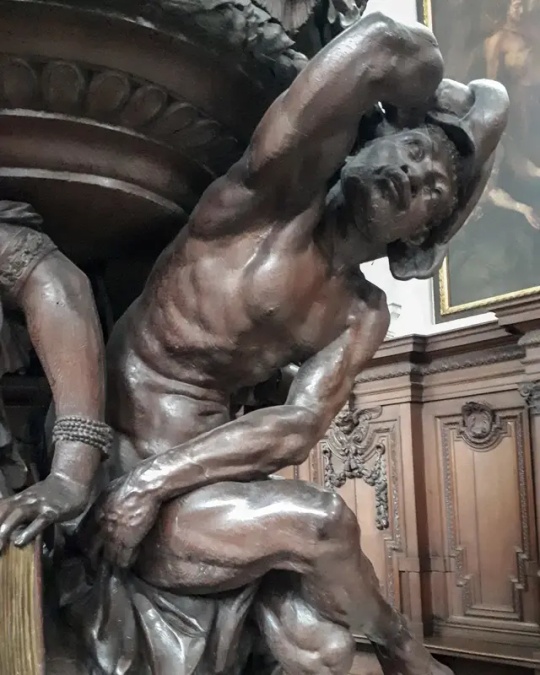
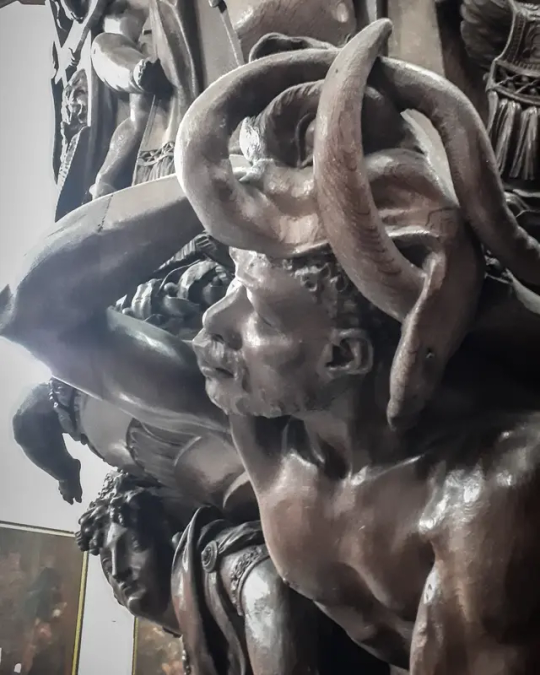
Mechelen was from the late middle ages till the baroque period a centre of woodsculpting. So in this city you can find many top noch furnitures, wood carvings and woodsculptures. Here i present to you the pulpit of the Saint-Peter-and-Paul church (Sint-Pieter-en-Pauluskerk) in Mechelen, Belgium.
The Saint Peter and Paul Church is a former Jesuit church on the Veemarkt in Mechelen. The pulpit, a work by Hendrik Frans Verbruggen (ca. 1700), shows in the form of allegorical figures the spread of the Faith across four continents by the Jesuit Francis Xavier.
The base is a globe resting on crawlers; The globe contains the four then known continents, in the form of persons and characteristic animals:
America: the Indian, turtle and snake
Europa: the young woman with the horn of abundance (cornucopia), a sceptre, a book and a doe
Asia: the woman with a turban and the leopard
Africa: the black one covered with elephant skin, and the crocodile.
Some background on the sculptor Hendrik Frans Verbruggen:
He was born into a family that produced a number of prominent sculptors in the 17th and 18th centuries who were mainly active in Antwerp. His father, the sculptor Pieter Verbruggen, was one of the most important representatives of the Flemish High Baroque in sculpture. The father had been apprenticed to Erasmus Quellinus I, who himself was the founder of a prominent family of sculptors. The father was married to the daughter of his teacher Erasmus Quellinus. From this marriage Hendrik Frans Verbruggen was born. His brother Pieter Verbruggen also became a sculptor and worked in his father's studio.
He was initially trained by his father. However, he is said to have started his career with the book illuminator Jan Ruyselinck. It cannot be ruled out that after his education, like his brother Pieter, he first made a trip to Italy. This journey is not documented. The influence of the Italian sculptor Gianlorenzo Bernini on his work could also be explained by the fact that he used drawings after Bernini's works and antique sculptures that his brother made in Rome as a source of inspiration.
He became a master sculptor with the Antwerp Guild of Saint Luke in 1682. That year he married Susanna Verhulst. He became dean of the Guild of Saint Luke in 1689. In 1713 he went bankrupt, but this did not prevent him from completing existing assignments.
#historical#belgium#history#historical interior#art history#wood sculpture#sculptures#scultura#sculpture#pulpit#wood#oak#fine art#flemish art#flemish#sculptor#churches#church#eglise#iglesia#igreja#chiesa#religious art#mechelen#flanders#brabant#baroque art#baroque#barok#europe
24 notes
·
View notes
Text

Naturaleza muerta en un entorno arquitectónico Jan Fyt (flamenco, 1611-1661) y Erasmus Quellinus el Joven (flamenco, 1607-1678), alrededor de 1645 Medio/Técnica: Óleo sobre lienzo Dimensiones: 112,4 x 82,9 cm (44 1/4 x 32 5/8 in.) Línea de crédito: Fondo Ernest Wadsworth Longfellow Número de acceso: 50.2728 EN EXHIBICIÓN: Galería William I. Koch (Galería 250) Colecciones: Europa
Información e imagen del sitio web del museo Museum of Fine Arts Boston.
2 notes
·
View notes
Photo

Jan Erasmus Quellinus, 1634-1715
Thetis dips Achilles in a vase with water from the Styx, 1668, oil on canvas
Private Collection
7 notes
·
View notes
Note
@bark-han here, I'm sorry if I'm confusing with my million blogs, I just like to keep it separate 🙃
I've went and reread the banquet scene recently. It's really quite similar imaginary-wise.
"Indeed, my Master, after planting a kiss on my cheek, went to the very center of the table, to a space left there, presumably by one of those cavorting to the music, and he stepped over the padded bench and sat down."
"He looked the Christ again at the Last Supper..."
And then again:
"He sat at the table still, Christ of the Last Supper, with his neatly parted hair, his shining face, his ruddy hands folded one on top of the other, looking with his hot and swimming eyes at me."
I bet everybody knows what's that about, but here's one of the numerous paintings of it for the frame of reference.

The Last Supper, Jan Erasmus Quellinus (1634–1715)
So yeah, it's veeeery close, and both scenes are a gory mockery of that event. It's also placed on the timeline right before Amadeo's death. There're maybe the same implications if the scene in the show is the last one before everything goes off the rails. I'm not very well versed in Christian lore, you're welcome to add anything if you see it correspond in deeper ways.
About the difference. They put the people down differently. Marius goes about killing the men one by one there and he just drinks from them.
I don't know about Lestat. It's a possibility, but I thought Armand would keep him for himself and away from the coven until the trial. But it's the troupe taking the foolery up the levels Armand can't stand, 100%.
""I tire of this," he said in a cold, clear voice that echoed through the tapestries off the walls. It had a chilling sound to it. All looked at him, even the struggling man on the floor."
Hello! What do you think is going on in that small clip where Armand is sitting at the table with others and he yells and everyone falls over onto the table? Is that the coven or humans?

I'm not 100% sure yet.
On one hand it could be mortals, but I cannot help myself the one guy looks like the "accountant vampire"?! I could be wrong, obviously...^^
The fact that Armand is dressed in red and gold is no coincidence, as the dinner here likely is meant as an echo to the "banquet scene" in The Vampire Armand, where Marius taught him an important lesson at such a setting (and Marius' colors are red and gold).
The only question will be for whom that lesson was meant. And why Armand suddenly (apparently suddenly) exerts this level of mind control over the whole? almost the whole? room.
We have seen Lestat do something similar in s1.
The above scene is to demonstrate the immediacy and power of Armand's powers - and I think it works beautifully.
If this is his coven... then that "demonstration" is even more powerful, of course. But even if it's "only" humans...

I friggin' love what the show does with the powers :))
72 notes
·
View notes
Photo

Jan Erasmus Quellinus - Crowning of Charles V in Bologna - 1681
oil on canvas, Height: 413 cm (13.5 ft); Width: 285 cm (112.2 in)
Kunsthistorisches Museum, Vienna, Austria
Charles V (24 February 1500 – 21 September 1558) was Holy Roman Emperor and Archduke of Austria from 1519, King of Spain (Castile and Aragon) from 1516, and Lord of the Netherlands as titular Duke of Burgundy from 1506. As head of the rising House of Habsburg during the first half of the 16th century, his dominions in Europe included the Holy Roman Empire, extending from Germany to northern Italy with direct rule over the Austrian hereditary lands and the Burgundian Low Countries, and a unified Spain with its southern Italian kingdoms of Naples, Sicily, and Sardinia. Furthermore, his reign encompassed both the long-lasting Spanish and the short-lived German colonizations of the Americas. The personal union of the European and American territories of Charles V was the first collection of realms labelled "the empire on which the sun never sets".
After the death of his paternal grandfather, Maximilian, in 1519, Charles inherited the Habsburg Monarchy. He was also the natural candidate of the electors to succeed his grandfather as Holy Roman Emperor. After having paid huge bribes to the electors, he defeated the candidacies of Frederick III of Saxony, Francis I of France, and Henry VIII of England. The electors gave Charles the crown on 28 June 1519. On 26 October 1520 he was crowned in Germany and some ten years later, on 22 February 1530, he was crowned Holy Roman Emperor by Pope Clement VII in Bologna, the last emperor to receive a papal coronation.
Jan Erasmus Quellinus (1634 in Antwerp – 11 March 1715 in Mechelen) was a Flemish painter and draughtsman and a member of the famous Quellinus family of artists. He was one of the last prominent representatives of the great Flemish school of history and portrait painting in the 17th century. His work displays the classicizing influences of his father Erasmus Quellinus the Younger and Paolo Veronese. Mainly active in his native Antwerp, he worked for some time in Vienna for the Habsburg court as a court painter to Emperor Leopold I.
53 notes
·
View notes
Photo

Jan Erasmus Quellinus - The four seasons
2 notes
·
View notes
Text

Capture of King Francis I at the Battle of Pavia by Jan Erasmus Quellinus
#pavia#battle of pavia#king francis#kingdom of france#the holy roman empire#hapsburg#empire#charles v#europe#european#medieval#art#painting#history#france#knight#knights#warrior#king#francis i#habsburg#habsburg monarchy#habsburg empire#italy#northern italy#renaissance#armour#emperor#italian wars
18 notes
·
View notes
Photo

45. Sémele, Juno e Júpiter
A filha de Cadmo (e Harmonia) está grávida de um filho de Júpiter. Juno, enciumada, planeia a vingança e a destruição de Sémele.
(Jan-Erasmus Quellinus - Zeus, Semele und Hera)
7 notes
·
View notes
Photo

Allegory of Redemption (Design for a Frontispiece), Jan Erasmus Quellinus, 17th-18th century, Harvard Art Museums: Drawings
Harvard Art Museums/Fogg Museum, Gift of Dorothy B. Edinburg Size: 12.8 x 8.8 cm (5 1/16 x 3 7/16 in.) primary mount: 14 x 10 cm (5 1/2 x 3 15/16 in.) secondary mount: 23 x 17 cm (9 1/16 x 6 11/16 in.) Medium: Gray ink and brown wash over graphite or black chalk, incised, with a framing line in brown ink, on cream antique laid paper
https://www.harvardartmuseums.org/collections/object/296496
52 notes
·
View notes
Photo

ERASMUS QUELLINUS THE YOUNGER
On this day of 19th November, Erasmus Quellinus the Younger or Erasmus Quellinus II (1607–1678) was born in Antwerp, Belgium.
He was a Flemish painter, engraver, draughtsman, and tapestry designer who worked in various genres including history, portrait, battle, and animal paintings. He was a pupil of Peter Paul Rubens and one of his closest collaborators. Following Rubens' death, he became one of the most successful painters in Flanders. He was a prolific draughtsman who made designs for decorative programmes in the context of official celebrations, for publications by the local publishers, and for tapestries and sculptures.
He belongs to the leading artistic families in Antwerp, producing sculptors, painters and printmakers Father Erasmus Quellinus I, a sculptor, brothers were artists.
Quellinus commenced his apprenticeship with Jan Baptist Verhaeghe. He became a master of the Antwerp Guild of Saint Luke
As was common in Antwerp at the time, Quellinus collaborated with other painters. He worked with still life specialists and portraits. Many of the still lifes fall into the category of 'garland paintings'. Garland paintings are a special type of still life invented in Antwerp and whose earliest practitioner was Jan Brueghel the Elder. These paintings typically show a flower garland around a devotional image or portrait. Garland paintings were usually collaborations between still life and a figure painter.
Quellinus collaborated with his brother-in-law Jan Philip van Thielen, Daniel Seghers, Jan Pieter Brueghel, Frans Ykens, Peter Willebeeck, and Jan Anton van der Baren. These collaborators painted the flower garland while Quellinus painted the figures and architectural setting. Such as the Holy Family in a Wreath of Flowers. Quellinus further collaborated with still life painter Jan Fyt such as the Portrait of a young boy. Quellinus also collaborated with animal painters Peter Boel and genre painter Jan van Kessel the Elder.
Quellinus executed various tapestry series depicting the History of the Thurn and Taxis Family. He also made a series of 8 sketches with battle scenes kept in the Royal Museums of Fine Arts of Belgium.
He produced frontispieces for the Plantin Press, and designs for various publications for the Antwerp publishers which includes his designs for the Den methamorphosis ofte Herscheppinge van P. Ovidivs Naso: verdeelt in XV boecken, versiert met figueren.
Erasmus was a prolific designer of sculptures and decorative projects. The inventory of his estate lists hundreds of drawings, of which at least 43 are for architecture, which would have included altarpieces and large-scale sculptures as well as others for sculpture and decoration. He is believed to have contributed designs for the organs in the Antwerp cathedral and Saint Paul's Church in Antwerp.
His pupils included his son Jan Erasmus Quellinus, Guilliam Forchondt (II), Julius de Geest, Willem de Ryck, Anthoni Schoonjans, Wallerant Vaillant, and Remacle Serin.
2 notes
·
View notes
Photo


Erasmus Quellinus II (Erasmus Quellinus the Younger) (Antwerp, 1607 - 1678), The Death of Eurydice, 1636-1638, oil on canvas, 179 × 195 cm Museo del Prado
The Death of Eurydice is one of the 60 mythological paintings produced for Torre de la Parada, the hunting lodge of King Philip IV of Spain, by Peter Paul Rubens assisted by Jacob Jordaens, Cornelis de Vos, Thomas Willeboirts Bosschaert, Theodoor van Thulden, Jan Boeckhorst, Jan Cossiers and other artists working to his designs. E. Quellinus II was a pupil of Rubens. Unlike other collaborators, he closely followed the sketches of his master. However, here he added Orpheus’ lyre as an element helping to clarify the theme; also, the painting differs from the sketch in format. Two additional straps on both sides of the painting were probably made after it was finished (as the signature is on the edge of the composition that followed Rubens' sketch) to adjust it to the place where it was going to hang. These additions reduce the tension in the composition, which in its original vertical format was more focused on the characters, as this happens, for example, with The Rape of Ganymede.
(Sources: Wikipedia and Museo del Prado)
Rubens’ oil sketch for The Death of Eurydice is now in Museum Boijmans Van Beuningen, Rotterdam:

#erasmus quellinus the younger#erasmus quellinus ii#rubens#peter paul rubens#orpheus#eurydice#oil sketch#flemish art#baroque#17th century#museo del prado#museum boijmans van beuningen#torre de la parada
54 notes
·
View notes
Photo

Attributed to Jan Erasmus Quellinus, 1634-1715
Welcoming Cleopatra, n/d, oil on canvas, 96x135 cm
Private Collection
2 notes
·
View notes

